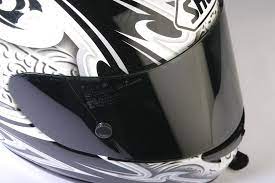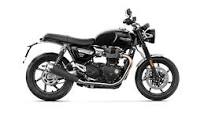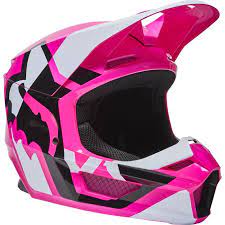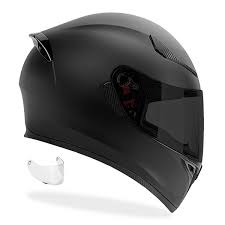
Tinted Motorcycle Helmet: Enhancing Style and Safety
When it comes to riding motorcycles, safety should always be a top priority. One essential element of rider safety is a motorcycle helmet. However, beyond its primary function of protecting the rider’s head, a helmet can also serve as a stylish accessory that reflects the rider’s personality. This is where the tinted motorcycle helmet comes into play.
A tinted motorcycle helmet is designed with a visor that has a dark or mirrored coating, providing various benefits for riders. Firstly, it offers protection against the glaring sun and harsh UV rays. Riding in bright sunlight can strain your eyes and affect your visibility on the road. A tinted visor helps reduce glare, allowing you to maintain clear vision and focus on the road ahead.
Moreover, a tinted visor provides privacy and shields your face from prying eyes. It adds an air of mystery and intrigue to your appearance while maintaining your anonymity on the road. Whether you’re commuting through busy city streets or embarking on long rides in scenic landscapes, a tinted visor gives you the freedom to enjoy your journey without feeling exposed.
In addition to its protective features, a tinted motorcycle helmet adds an extra touch of style to your overall look. With various shades and finishes available, you can choose a visor that complements your bike or matches your personal taste. Whether you prefer a sleek black tint or an eye-catching mirrored finish, there are options for every rider’s style preference.
It’s important to note that while tinted visors offer numerous advantages, they should be used responsibly. Different countries have specific regulations regarding the permissible level of darkness for motorcycle helmet visors. Always ensure that the level of tint on your visor complies with local laws to avoid any legal complications.
When selecting a tinted motorcycle helmet, consider factors such as comfort, fit, and safety certifications alongside aesthetics. Look for helmets that meet safety standards and provide optimal protection for your head in case of an accident. A well-fitting helmet with a quality tinted visor will not only enhance your style but also ensure your safety on the road.
Remember, a tinted motorcycle helmet is not just a fashion statement; it’s an essential piece of protective gear. It combines functionality and style, allowing you to ride with confidence while expressing your individuality. So, whether you’re a seasoned rider or new to the world of motorcycles, consider adding a tinted motorcycle helmet to your gear collection and elevate both your safety and style on the road.
Benefits of Tinted Motorcycle Helmets: Glare Reduction, UV Protection, Privacy and Anonymity, Style Enhancement, Versatility, Eye Fatigue Prevention
- Glare Reduction
- UV Protection
- Privacy and Anonymity
- Style Enhancement
- Versatility
- Eye Fatigue Prevention
7 Drawbacks of Tinted Motorcycle Helmets in the UK
- Reduced Visibility
- Limited Adaptability
- Restricted Peripheral Vision
- Legal Restrictions
- Impaired Communication
- Increased Fogging Risk
- Less Versatility
Glare Reduction
Glare Reduction: Enhancing Safety with a Tinted Motorcycle Helmet
Riding a motorcycle under the bright sun is an exhilarating experience, but it can also pose challenges to your safety. The intense glare from the sun can be blinding and hinder your ability to see clearly, potentially leading to accidents. This is where the tinted motorcycle helmet comes to the rescue.
One of the significant advantages of a tinted motorcycle helmet is its ability to reduce glare. Equipped with a visor that has a dark or mirrored coating, it effectively blocks out excessive light and minimizes the impact of glare on your vision. This feature allows you to maintain clear visibility on the road, even in bright sunlight.
By reducing glare, a tinted visor helps prevent distractions and ensures that you can focus on the road ahead. It enhances your overall safety by providing a clear line of sight, allowing you to anticipate any obstacles or hazards in your path. Whether you’re navigating through busy city streets or cruising along open highways, a tinted motorcycle helmet gives you an added advantage against harsh sunlight.
Furthermore, reduced glare translates into less eye strain during long rides. Riding for extended periods under intense sunlight can cause fatigue and discomfort due to squinting and strained eyes. With a tinted visor shielding your eyes from excessive light, you can enjoy longer rides with greater comfort and reduced eye fatigue.
It’s important to note that while a tinted motorcycle helmet offers glare reduction benefits, it should be used responsibly and in accordance with local laws. Different regions may have specific regulations regarding the permissible level of darkness for helmet visors. Always ensure that your tinted visor complies with these regulations to avoid any legal issues.
When choosing a tinted motorcycle helmet, consider factors such as comfort, fit, and safety certifications alongside its glare reduction properties. Look for helmets that provide optimal protection for your head while offering effective glare reduction capabilities. A well-fitting helmet with a quality tinted visor will not only enhance your safety but also provide a more enjoyable riding experience.
In conclusion, a tinted motorcycle helmet is a valuable asset for riders seeking enhanced safety on the road. By reducing glare from the sun, it helps maintain clear visibility and prevents distractions caused by excessive light. Invest in a tinted motorcycle helmet to ride with confidence, knowing that you have an extra layer of protection against the challenges posed by bright sunlight.
UV Protection
UV Protection: Shielding Your Eyes and Skin with a Tinted Motorcycle Helmet
When it comes to riding motorcycles, safety should always be a top priority. While helmets are crucial for protecting your head, a tinted motorcycle helmet offers an additional advantage: UV protection.
Tinted visors provide riders with an extra layer of defense against harmful ultraviolet (UV) rays. Prolonged exposure to UV radiation can have damaging effects on your eyes and skin, leading to long-term health issues.
By wearing a tinted motorcycle helmet, you effectively shield yourself from these harmful rays, reducing the risk of sunburn or eye strain. The dark or mirrored coating on the visor acts as a barrier, minimizing the amount of UV radiation that reaches your face.
Not only does this added protection enhance your comfort during rides in sunny conditions, but it also contributes to your long-term well-being. By reducing exposure to UV rays, you lower the chances of developing eye conditions such as cataracts or macular degeneration. Additionally, it helps prevent sunburn and potential skin damage caused by prolonged sun exposure.
When selecting a tinted motorcycle helmet for UV protection, ensure that the visor provides adequate coverage and meets safety standards. Look for helmets with visors that have been specifically designed to block out harmful UV rays.
However, it’s essential to strike a balance between protection and visibility. Ensure that the level of tint on your visor allows for clear vision while still effectively shielding you from UV radiation. Different tint levels are available to suit varying light conditions and personal preferences.
Remember to check local regulations regarding permissible levels of tint on motorcycle helmet visors. Adhering to these guidelines ensures that you stay within legal limits while enjoying the benefits of UV protection.
In conclusion, a tinted motorcycle helmet goes beyond just style—it offers valuable UV protection for riders. By wearing one, you safeguard your eyes and skin from the harmful effects of UV radiation. So, whether you’re cruising down sun-drenched roads or embarking on a long ride, choose a tinted motorcycle helmet to shield yourself from the sun’s rays and enjoy safer, more comfortable journeys.
Privacy and Anonymity
Privacy and Anonymity: The Appeal of Tinted Motorcycle Helmets
When it comes to riding motorcycles, some riders prefer to keep a low profile and enjoy their journey in peace. This is where the tinted motorcycle helmet with its privacy-enhancing visor comes into play.
One of the key advantages of a tinted visor is the added level of privacy it provides. By preventing others from easily seeing your face while riding, it creates a sense of personal space and anonymity. This can be particularly appealing for riders who value their privacy or prefer not to draw unnecessary attention on the road.
Imagine cruising through the city streets or embarking on an adventurous ride, shielded behind your tinted visor. It’s like having your own private world within the bustling chaos of traffic. With your face partially concealed, you can enjoy the freedom of riding without feeling exposed to prying eyes.
For those who prefer solitude while riding, a tinted motorcycle helmet offers a sanctuary from unwanted interactions. It allows you to focus solely on the road ahead, without distractions or interruptions. Whether you’re commuting to work or embarking on a long-distance journey, this added level of privacy can enhance your overall riding experience.
Moreover, a tinted visor also acts as a shield against external elements such as wind, dust, and insects. It provides an extra layer of protection for your face while maintaining your privacy. You can ride comfortably knowing that your face is shielded from potential irritants that may hinder your concentration or cause discomfort.
While enjoying the benefits of privacy and anonymity with a tinted motorcycle helmet, it’s important to strike a balance between safety and style. Ensure that the level of tint on your visor complies with local regulations to maintain clear visibility on the road. Safety should always remain paramount when choosing any motorcycle gear.
Whether you’re an introverted rider who cherishes personal space or simply someone who prefers not to attract unnecessary attention, a tinted motorcycle helmet can be a valuable addition to your gear collection. It offers the dual benefits of privacy and anonymity, allowing you to ride with peace of mind and enjoy the freedom of the open road on your own terms.
Style Enhancement
Style Enhancement: Tinted Motorcycle Helmets
When it comes to riding motorcycles, style is not just limited to the bike itself. Your gear and accessories play a significant role in expressing your individuality on the road. One accessory that can truly enhance your style as a rider is a tinted motorcycle helmet.
Tinted motorcycle helmets offer more than just protection; they add a touch of flair and individuality to your overall look. With various shades and finishes available, you have the opportunity to choose a visor that matches your bike’s aesthetic or reflects your personal taste.
Whether you prefer a sleek black tint, a smoky gray shade, or even an eye-catching mirrored finish, there is a tinted visor that can perfectly complement your style. The added visual appeal of a tinted helmet can make you stand out from the crowd and turn heads wherever you ride.
Not only do tinted motorcycle helmets enhance your style, but they also provide an element of privacy and mystique. The darkened visor shields your face from prying eyes, adding an air of mystery to your appearance. It allows you to maintain anonymity while enjoying the freedom of the open road.
Furthermore, opting for a tinted visor doesn’t mean compromising on functionality or safety. Modern tinted helmets are designed with high-quality materials that meet safety standards and provide optimal protection for your head. You can ride with confidence knowing that you’re not only looking stylish but also taking care of your well-being.
So, whether you’re cruising through city streets or embarking on long rides in picturesque landscapes, consider adding a tinted motorcycle helmet to your gear collection. It’s an accessory that not only offers protection but also adds personality and style to your overall look as a rider.
Remember to check local regulations regarding permissible levels of darkness for motorcycle helmet visors before making any purchases. Safety should always be a priority when selecting gear for riding.
Ride with confidence, express your individuality, and let your style shine with a tinted motorcycle helmet. It’s the perfect way to enhance your look and make a statement on the road.
Versatility
Versatility: Tinted Motorcycle Helmet Visors for All Lighting Conditions
When it comes to riding motorcycles, having the right gear is crucial. One essential accessory that enhances both style and safety is a tinted motorcycle helmet visor. Apart from its aesthetic appeal, one significant advantage of a tinted visor is its versatility in various weather conditions and lighting situations.
Tinted visors are not just designed for sunny days; they offer benefits in a range of lighting conditions. In overcast or low-light situations, such as during dawn or dusk rides, a tinted visor helps reduce glare from artificial lights or car headlights. This reduction in glare enhances visibility and allows riders to maintain focus on the road ahead.
Moreover, tinted visors provide added comfort during long rides by reducing eye strain caused by intense light exposure. They act as a shield against harsh sunlight, preventing squinting and fatigue that can affect concentration while riding. With a tinted visor, you can enjoy your journey without being bothered by excessive brightness.
Another advantage of tinted visors is their ability to enhance contrast and depth perception. By reducing glare and filtering out certain wavelengths of light, they improve visual clarity and make objects appear more distinct. This can be particularly beneficial when navigating through challenging terrains or dealing with varying lighting conditions on the road.
Additionally, tinted visors offer privacy and protect your eyes from wind, dust, and debris while riding at high speeds. They act as a barrier against external elements without compromising visibility or obstructing your field of view. You can ride confidently knowing that your eyes are shielded from potential hazards.
It’s important to note that different shades of tint are available for motorcycle helmet visors to cater to individual preferences and specific lighting conditions. From light smoke tints to darker shades, riders have options to choose from based on their needs.
However, it’s crucial to consider local regulations regarding the permissible level of tint on visors. Ensure that the tint level on your visor complies with legal requirements to avoid any potential issues with law enforcement.
In summary, the versatility of tinted motorcycle helmet visors is a significant advantage for riders. They provide benefits not only on sunny days but also in overcast or low-light conditions by reducing glare from artificial lights or car headlights. With improved visibility, reduced eye strain, and enhanced contrast, riders can enjoy a safer and more comfortable riding experience in various lighting situations.
So, whether you’re cruising under the bright sun or navigating through dimly lit roads, a tinted visor can be a valuable accessory that enhances both style and safety on your motorcycle journeys.
Eye Fatigue Prevention
Eye Fatigue Prevention: The Benefits of a Tinted Motorcycle Helmet
Riding a motorcycle can be an exhilarating experience, but it’s important to prioritize your safety and comfort while on the road. One significant advantage of a tinted motorcycle helmet is its ability to prevent eye fatigue during extended rides.
When riding for long periods, especially in sunny conditions, the constant exposure to bright sunlight can strain your eyes. Squinting against the sun’s rays not only affects your vision but also leads to eye fatigue. Additionally, reflections off surfaces like water or glass windows can further intensify this strain.
A tinted visor on your motorcycle helmet acts as a shield against these external factors, reducing the strain on your eyes and preventing eye fatigue. By blocking out excessive sunlight and minimizing harsh reflections, the tinted visor allows you to ride comfortably for longer durations.
Not only does a tinted visor protect your eyes from bright sunlight, but it also enhances visibility by reducing glare. This is particularly beneficial when riding in areas with reflective surfaces or during sunrise and sunset when the sun’s position can create blinding conditions. With a tinted visor, you can maintain clear vision without squinting or straining your eyes.
By preventing eye fatigue, a tinted motorcycle helmet contributes to safer riding practices. Fatigued eyes can impair your ability to focus on the road ahead and react promptly to potential hazards. With reduced eye strain, you’ll be more alert and better equipped to navigate through traffic or challenging terrains.
It’s worth noting that different tints offer varying levels of light transmission. When selecting a tinted visor for your motorcycle helmet, consider the lighting conditions you typically ride in. Some riders prefer darker tints for intense sunlight, while others opt for lighter tints that provide moderate protection without compromising visibility in lower light conditions.
Remember that safety should always be paramount when choosing any motorcycle gear. Ensure that the tinted visor complies with local regulations and safety standards. Additionally, regularly clean and maintain your visor to prevent any obstruction to your vision.
In conclusion, a tinted motorcycle helmet offers more than just a stylish accessory; it provides practical benefits such as eye fatigue prevention. By reducing strain caused by bright sunlight and reflections, a tinted visor allows you to ride comfortably for extended periods. Prioritize your safety and comfort by considering a tinted motorcycle helmet for your next ride.
Reduced Visibility
Reduced Visibility: A Consideration with Tinted Motorcycle Helmets
Tinted motorcycle helmets undoubtedly offer several advantages, but it is essential to consider potential drawbacks as well. One such concern is reduced visibility. While a tinted visor effectively reduces glare from the sun, it can also pose challenges in low-light conditions or at night.
When riding in dimly lit environments, such as during dusk or dawn, a tinted visor may obstruct your vision. The darkened coating that helps shield your eyes from bright sunlight can inadvertently make it harder to see potential hazards on the road. This reduction in visibility could compromise your safety and increase the risk of accidents.
Moreover, riding at night with a tinted visor poses even greater visibility issues. As natural light diminishes, relying solely on artificial streetlights can be insufficient to illuminate your surroundings adequately. The added darkness caused by the tinted visor further limits your ability to perceive objects and obstacles ahead.
To mitigate this con of tinted motorcycle helmets, riders should exercise caution and consider alternative options when riding in low-light or nighttime conditions. One solution is to have an additional clear visor readily available for such situations. This way, you can easily switch out the tinted visor when visibility becomes compromised.
Alternatively, some helmets offer integrated solutions like photochromic visors that automatically adjust their level of tint based on ambient light conditions. These adaptive visors provide the benefit of reducing glare during the day while offering clearer vision in darker settings without requiring manual changes.
Ultimately, it is crucial for riders to strike a balance between style and safety when choosing a helmet with a tinted visor. Assessing your typical riding conditions and considering the potential limitations of reduced visibility will help you make an informed decision.
Remember, prioritizing safety should always be paramount when enjoying the thrill of motorcycling. By being aware of the reduced visibility factor associated with tinted motorcycle helmets, riders can take appropriate measures to ensure they have optimal visibility in all lighting conditions, ultimately enhancing their safety on the road.
Limited Adaptability
Limited Adaptability: The Drawback of Tinted Motorcycle Helmets
Tinted motorcycle helmet visors undoubtedly offer numerous advantages, but it’s important to consider their limitations as well. One significant drawback is their limited adaptability to changing light conditions. While tinted visors excel in sunny weather by reducing glare and protecting against UV rays, they may not be suitable for riding in overcast or dark environments.
When the sun hides behind clouds or during evening rides, a tinted visor can significantly reduce visibility. The dark coating that enhances your vision on bright days can become a hindrance when light levels are low. This limitation can compromise your safety on the road, as it may be more challenging to spot potential hazards or obstacles.
To overcome this issue, riders with tinted visors often find themselves needing to switch between a tinted and clear visor depending on the weather conditions. This process can be inconvenient and time-consuming, requiring you to carry an extra visor or invest in helmets with interchangeable visors. Adjusting your helmet’s visor while on the go might also distract you from focusing entirely on the road ahead.
The need for adaptability is particularly crucial for riders who frequently encounter varying weather conditions during their journeys. Riding through areas where weather patterns change rapidly can make relying solely on a tinted visor impractical.
However, it’s essential to note that advancements in technology have led to the development of photochromic or transition lenses for motorcycle helmets. These lenses automatically adjust their tint level based on the surrounding light conditions, providing a solution to the limited adaptability of traditional tinted visors. While these lenses offer greater convenience and versatility, they may come at a higher cost compared to standard tinted visors.
Ultimately, riders must carefully consider their riding habits and local weather conditions before opting for a tinted motorcycle helmet. If you primarily ride in sunny areas with minimal changes in lighting, a tinted visor may be a suitable choice. However, if you frequently encounter overcast or dark environments, it may be worth exploring alternative options that offer better adaptability.
In conclusion, while tinted motorcycle helmet visors provide several benefits, their limited adaptability to changing light conditions is a significant con to consider. Being aware of this drawback allows riders to make informed decisions about their safety and convenience on the road.
Restricted Peripheral Vision
Restricted Peripheral Vision: A Consideration for Tinted Motorcycle Helmets
While tinted motorcycle helmets offer numerous advantages, it’s important to consider potential drawbacks as well. One notable con of using a tinted visor is the restricted peripheral vision it may cause. Compared to clear visors, some tinted versions have a narrower field of vision, which can hinder your ability to spot vehicles or objects approaching from the sides. This limitation in peripheral vision could potentially increase the risk of accidents.
Peripheral vision plays a crucial role in road safety, allowing riders to be aware of their surroundings and anticipate any potential hazards. Being able to quickly detect vehicles, pedestrians, or obstacles from the corners of your eyes is vital for making split-second decisions on the road. With a tinted visor that narrows your field of view, there is a chance that you might miss important visual cues from your periphery.
It’s worth noting that the degree of restricted peripheral vision can vary depending on the specific tint and brand of helmet you choose. Some manufacturers have taken steps to minimize this issue by incorporating wider visor designs or using advanced optics that maintain a broader field of vision while still providing adequate sun protection.
To mitigate the risk associated with limited peripheral vision, riders should exercise extra caution and compensate for this potential drawback when wearing a tinted helmet. Regularly scan your surroundings by moving your head and shoulders to maximize your visual range. Utilize mirrors effectively and make use of shoulder checks when changing lanes or making turns.
Furthermore, it’s crucial to choose a tint level that strikes a balance between sun protection and maintaining sufficient visibility. Opting for lighter tints or transition lenses that automatically adjust based on lighting conditions can help address this concern without compromising safety.
Ultimately, riders must carefully weigh the pros and cons when considering a tinted motorcycle helmet. While they offer style and sun protection benefits, it’s essential to be mindful of any limitations they may impose on peripheral vision. By adopting defensive riding techniques and selecting the appropriate tint level, riders can mitigate the risks associated with restricted peripheral vision and enjoy the advantages of a tinted visor safely on the road.
Legal Restrictions
Legal Restrictions: A Consideration for Tinted Motorcycle Helmets
When it comes to choosing a tinted motorcycle helmet, it’s important to be aware of the legal restrictions that may apply in your country or region. Different jurisdictions have specific regulations regarding the permissible level of darkness for motorcycle helmet visors. Failing to comply with these regulations could lead to legal consequences if you are stopped by law enforcement.
The purpose of these restrictions is to ensure that riders maintain adequate visibility on the road. Excessively dark visors can obstruct a rider’s vision, particularly in low-light conditions or at night. This poses a risk not only to the rider but also to other road users.
To avoid potential legal issues, it is crucial to familiarize yourself with the specific regulations governing tinted visors in your area. These regulations may specify the maximum allowable level of tint or provide guidelines on visibility requirements. By adhering to these rules, you can ensure that you ride within the bounds of the law and prioritize safety for yourself and others.
It’s worth noting that some countries allow tinted visors but require riders to carry an additional clear or lightly tinted visor for use during nighttime or low-visibility situations. This ensures that riders have appropriate visibility in all conditions while still allowing them to enjoy the benefits of a tinted visor during daylight hours.
Before purchasing a tinted motorcycle helmet, check with local authorities, consult official guidelines, or seek advice from reputable retailers who are knowledgeable about local regulations. They can provide guidance on which types of tinted visors are permissible and offer alternatives if necessary.
Remember, safety should always be the primary concern when riding a motorcycle. While tinted visors offer advantages such as glare reduction and added privacy, it’s essential to strike a balance between style and compliance with legal requirements. By being informed about and respecting the legal restrictions surrounding tinted motorcycle helmets, you can enjoy your rides with peace of mind and avoid any potential legal consequences.
Impaired Communication
Impaired Communication: The Drawback of Tinted Motorcycle Helmets
While tinted motorcycle helmets offer benefits such as sun protection and added style, it’s important to consider their potential drawbacks. One significant con of using a tinted visor is the potential impairment of communication with other riders and pedestrians.
Effective communication on the road is crucial for maintaining safety and coordination, especially when riding in groups or navigating through traffic. Facial expressions and lip-reading play a significant role in non-verbal communication, allowing riders to convey important messages or warnings without relying solely on verbal cues.
However, when wearing a tinted visor, your face becomes partially concealed, making it more challenging for others to see your expressions clearly. This can hinder effective communication with fellow riders or pedestrians who may rely on visual cues to understand your intentions or respond appropriately.
Imagine trying to convey a message to a fellow rider about an upcoming hazard or change in direction. Clear visibility of your face can greatly aid in conveying that message effectively and promptly. With a tinted visor, these vital visual cues may be compromised, leading to potential miscommunication or delayed responses.
Moreover, interactions with pedestrians can also be affected by the use of a tinted motorcycle helmet. Pedestrians often rely on eye contact and facial expressions when crossing roads or engaging with motorcyclists. A partially concealed face may make it harder for them to gauge your attention or intentions, potentially leading to confusion or unsafe situations.
To mitigate this issue, some tinted visors come with features like anti-fog coatings or built-in flip-up mechanisms that allow you to switch between tinted and clear modes. These options provide flexibility by offering clear visibility when necessary for improved communication while still providing the benefits of sun protection and style.
It’s essential for riders using tinted motorcycle helmets to be aware of this potential drawback and take proactive steps to compensate for impaired communication. Maintaining extra vigilance on the road, using hand signals or other visible gestures, and ensuring clear visibility during critical communication moments can help mitigate the impact of a tinted visor on effective communication.
In conclusion, while tinted motorcycle helmets have their advantages, it’s crucial to be mindful of the potential impairment of communication that comes with a partially concealed face. By being aware of this drawback and implementing alternative communication methods when necessary, riders can strike a balance between style and safety on the road.
Increased Fogging Risk
Increased Fogging Risk: A Consideration for Tinted Motorcycle Helmets
Tinted motorcycle helmets undoubtedly offer a range of benefits, from enhanced style to protection against the sun’s glare. However, it’s important to be aware of potential drawbacks as well. One such con is the increased risk of fogging with tinted visors.
Tinted visors have a tendency to retain more heat compared to their clear counterparts. This can become problematic during colder weather conditions or when riding at lower speeds, as the temperature difference between the inside and outside of the helmet can lead to condensation forming on the visor. The result? Reduced visibility and potential safety hazards on the road.
Fogged-up visors significantly impair a rider’s ability to see clearly, making it difficult to anticipate obstacles, read road signs, or react promptly to changing traffic situations. This compromises not only the rider’s safety but also that of other road users. It is crucial for motorcyclists to have an unobstructed view of their surroundings at all times.
To mitigate this issue, there are a few measures riders can take. Firstly, investing in helmets with anti-fog coatings can help prevent fogging by reducing moisture buildup on the visor. These specialized coatings work by dispersing water droplets and allowing for better visibility even in challenging weather conditions.
Another option is to use anti-fog sprays or wipes specifically designed for motorcycle helmet visors. These products create a thin protective film that helps prevent condensation from forming on the surface of the visor.
Additionally, proper ventilation within the helmet plays a crucial role in reducing fogging. Ensuring that your helmet has adequate vents and using them effectively can help regulate airflow and minimize moisture buildup inside.
It’s essential for riders considering tinted motorcycle helmets to weigh both the advantages and disadvantages carefully. While tinted visors offer style and sun protection benefits, they do come with the potential risk of increased fogging. By taking proactive measures, such as using anti-fog coatings or sprays and optimizing helmet ventilation, riders can mitigate this issue and enjoy the benefits of tinted visors without compromising safety.
Ultimately, the decision to opt for a tinted motorcycle helmet should be based on individual preferences and riding conditions. By understanding and addressing the increased fogging risk associated with tinted visors, riders can make informed choices that prioritize both style and safety on their journeys.
Less Versatility
Less Versatility: A Consideration with Tinted Motorcycle Helmets
Tinted motorcycle helmets undoubtedly offer a range of benefits, from reducing glare to adding a touch of style. However, it’s important to consider the potential drawbacks as well. One notable disadvantage of using a tinted helmet visor is its limited versatility when it comes to adapting to changing light conditions.
Unlike clear visors that provide unobstructed vision, tinted visors restrict your options when faced with sudden shifts in weather or lighting situations while on the road. For instance, if you start your ride on a bright sunny day and encounter an unexpected patch of fog or enter a dimly lit tunnel, a tinted visor can hinder your visibility.
Clear visors allow riders to quickly adjust their vision to different light conditions by simply flipping up the visor or using an interchangeable lens system. This flexibility ensures that riders can maintain optimal visibility and adapt to changing environments effortlessly.
On the other hand, with a tinted visor, you may find yourself squinting or struggling to see clearly in low-light situations. This compromises your safety and reaction time on the road. It’s crucial to prioritize safety above all else when riding a motorcycle, and having limited visibility due to a tinted helmet visor can pose unnecessary risks.
To mitigate this issue, some riders opt for helmets with photochromic or transition lenses. These lenses automatically adjust their tint depending on the surrounding light conditions. While they offer more versatility compared to standard tinted visors, they may come at a higher cost.
Ultimately, the decision between using a tinted helmet visor or opting for clear ones depends on personal preference and riding conditions. If you predominantly ride in consistent lighting situations or prefer the added privacy and style offered by a tinted visor, it may be worth considering alternative solutions for adapting to sudden changes in lighting conditions.
Remember that safety should always be the top priority. Before embarking on any ride, assess the weather conditions and choose the appropriate helmet visor accordingly. By staying aware of the limitations of a tinted motorcycle helmet and making informed decisions, you can ensure a safer and more enjoyable riding experience.








